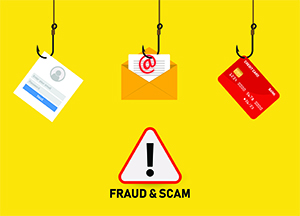
How To Recognize and Avoid Phishing Scams
Attention: 9/2/2021 - This spam email was sent to one our of
members.
The email went into a spam box, however, the user opened the
email and
then sent money to this scam address.
You should be cautious of opening
emails that have been sent to your spam.
As you can see it
does
not even have Deborah Carlsons' email address in the scam
email.
Here is email sent this morning:
Original Message
Subject: lookmwhat I found under your name...
From: "MarieFoucault-Phipps"
Date: Thu, September 2, 2021 10:41 am
Hi Deb I think I got a spam from 'you'.I copy it all below...
didn't
respond of course, it was in my spam box, but lately I had a lot
of
legitimate friends in it, so I opened it...
Marie
Hello, Are you free to assist? I'm not-available for now but I've
got
credence in you to take care of this for me, Glass Artists of
Colorado
need some gift cards for donations to Veterans at Hospice and
Palliative care units for preventive items from Corona Disease
(COVID-
19) due to their Vulnerability, I will be responsible for the
reimbursement.
Thank You,Deb CarlsonPres
From: was roronn@drdahanacademy.we
sharespace.drdahan.com
Here are four steps you can take
today to protect yourself from phishing
attacks.
Four Steps To Protect Yourself From Phishing
1. Protect your computer by using security
software. Set the software to update
automatically so it can deal with any new
security threats.
2. Protect your mobile phone by setting
software to update automatically. These
updates could give you critical protection
against security threats.
3. Protect your accounts by using multi-factor
authentication. Some accounts offer extra
security by requiring two or more credentials
to log in to your account. This is called
multi-factor authentication. The additional
credentials you need to log in to your account
fall into two categories:
Something you have - like a passcode you get
via an authentication app or a security key.
Something you are - like a scan of your
fingerprint, your retina, or your face.
Multi-factor authentication makes it harder
for scammers to log in to your accounts if
they do get your username and password.
4. Protect your data by backing it up. Back up
your data and make sure those backups aren't
connected to your home network. You can copy
your computer files to an external hard drive
or cloud storage. Back up the data on your
phone, too.
What To Do if You Suspect a Phishing Attack
If you get an email or a text message that
asks you to click on a link or open an
attachment, answer this question: Do I have an
account with the company or know the person
that contacted me?
If the answer is No, it could be a phishing
scam. Go back and review the tips in How to
recognize phishing and look for signs of a
phishing scam. If you see them, report the
message and then delete it.
If the answer is Yes, contact the company
using a phone number or website you know is
real. Not the information in the email.
Attachments and links can install harmful
malware.
